The allure of blue highways in many ways draws its power from the potential to discover unexpected cultural treasures along the twists and turns of less traveled byways. On a recent journey I found one.
It certainly offered the most understated of promotional roadside signage, even for the blue highways of Western Virginia. “OPEN” read the flapping flag next to a narrow road that climbed into a dense forest. However, for me its simplicity generated an irresistible draw. Turning off the highway put Elaine and me at the bottom of a steep narrow road that snaked up a hillside and, with a sharp hairpin to the right, twisted out of sight.
I would soon learn that this serpentine climb would lead to the century old Wood Ridge Farm in Woods Mill, Virginia, now, battling to survive the forces of our modern world with a brilliant strategy devised at the intersection of cold reality and the genius of its fourth generation owner.
Meet Barry Wood the visionary owner of the 300-acre home of the Wood Ridge Brewery and so much more.
Saving the farm. Barry Wood’s beach club on the Blue Ridge

Cresting the steep climb we faced a broad expanse of land rich with plowed fields and traditional farm buildings and equipment. Unexpectedly, integrated into this bucolic setting resided structures and features that were anything but traditional farm trappings. I resolved to meet the owner and ask, “What’s your story?”
I pulled into an open space in a large parking field filled with cars and dusty pickup trucks that worked for a living. All pointed towards a rough hewn, pin light adorned, handsome log building. It stood two stories high with open decks overlooking a sandy expanse filled with tropical trees and foliage.

Wood Ridge Farm Brewery, alive at night
Elaine and I walked in to be immersed in a beach-like party atmosphere with a live sound track from the stage and the competitive banter from the corn hole competition in process. Pretty young women holding beers socializing with attentive young men blended with families herding kids and dogs, retired couples and milling family groups. A genial mix surrounded the good natured competition on the corn hole courts. Others drifted along sandy trails edged with tropical flowers, banana trees and palm trees. Paths to the left led to a Tiki bar with a completely different musical track and vibe. Further on led to a food court with an outdoor brick oven pizza facility and the “Fired Up Curbside Grill” food truck.
Turning to the right led down a palm lined path to a sand volleyball court. To the side a huge natural tree-based Virginia L-O-V-E sculpture stretched 15 feet in the air. For those who do not know, Virginia has promoted the creation of large artistic LOVE signs that reflect the character of a tourist destination. Barry’s farm may have the largest of its kind. To the right one can hit golf balls on a 300 yard driving range. Off to the distant left of the driving range across a meadow stands an imposing five-acre corn maze. To its left resides a children’s obstacle course and petting park.
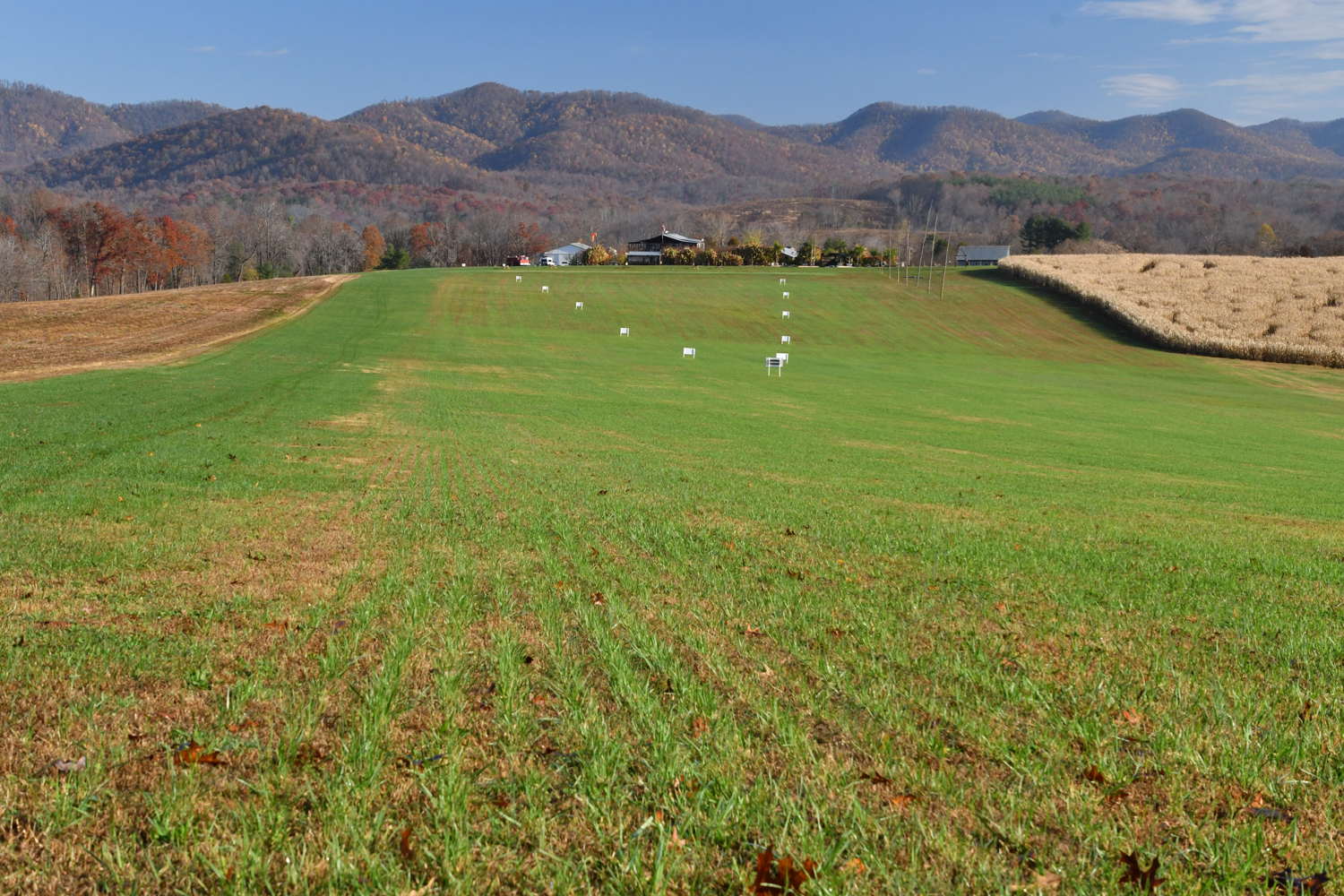
A long look at the brewery, driving range and corn maze
However, without doubt the centerpiece of this agrarian fun park is the Wood Ridge Farm Brewery. Here the young women and everyone else purchase beer brewed on location with the process visible through large windows directly behind the bar.
Asking a few questions we learned that the owner’s name was Barry Wood and were directed towards a man in a cowboy hat and jeans intently shucking oysters by a fire pit. We introduced ourselves then asked “What’s your story?”

Owner and visionary Barry Wood shucking oysters
Middle aged, friendly, fit and direct Barry clearly communicated the persona of a man of conviction with his words and deeds. Yes, a country boy, but also a licensed pilot, deep sea diver, past successful businessman and, now, a farm owner facing a world of challenges. Armed with an impressive skill set, astute business sense, fierce commitment to succeed and a love for sandy beaches (which explains the caribbean beach bar motif) he showed no intention of backing down from the challenge.
With the sale of the land he leased for his successful retail farm market, Barry, in 2000, chose to move to and re-energize the farm he had inherited from his father. With the house vacant for over 25 years and the land suffering from little attention for decades Barry took over a farm in dire need of help.
“It’s real simple,” stated Barry Wood with a relaxed Virginia drawl, “Today, as a small farmer you can’t make a living with a farm just by farming.” Made equally clear, was Barry’s absolute conviction to preserving the farm in its totality and in his family.
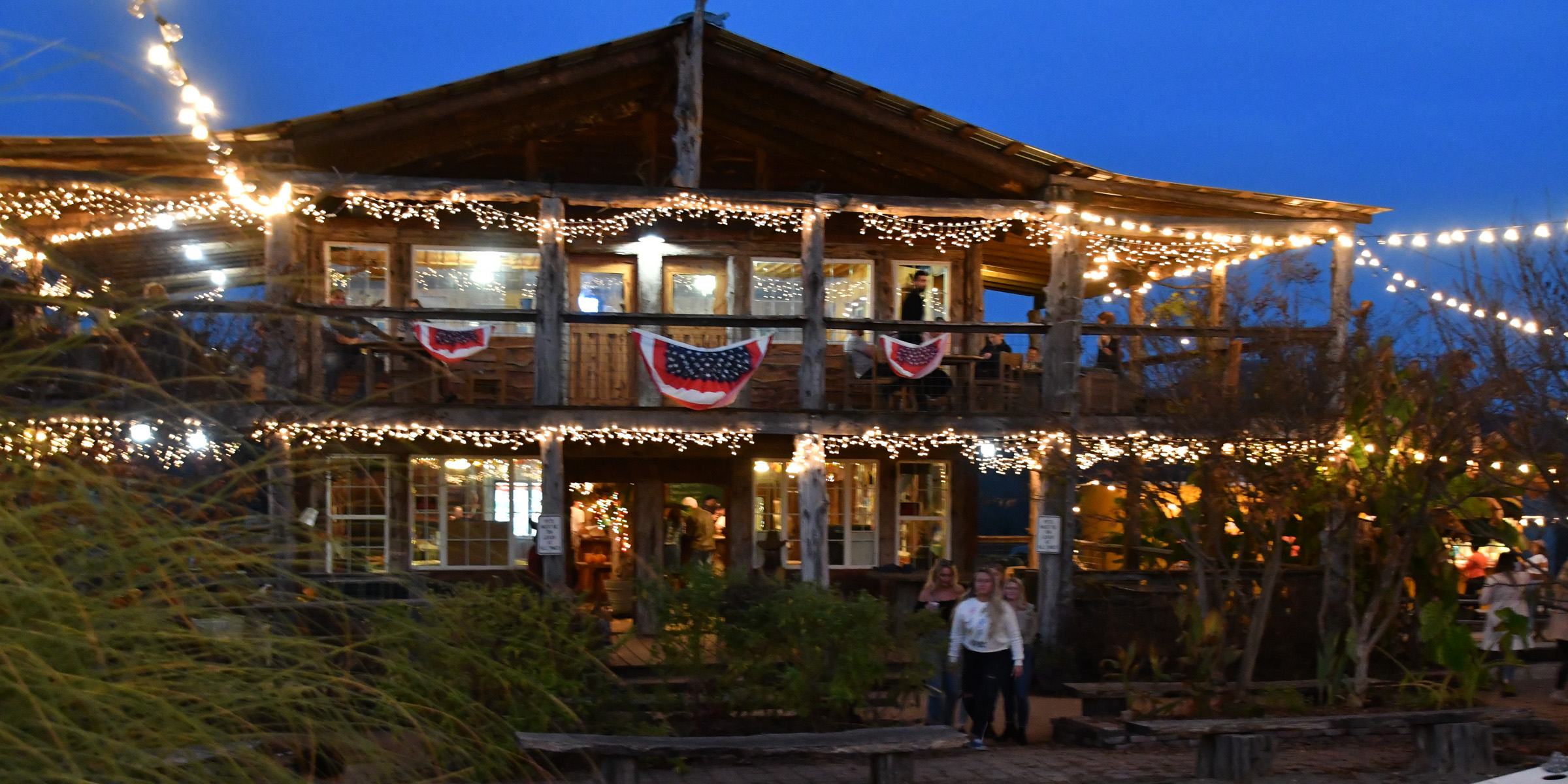
Wood Ridge Farm Brewery
Barry spoke of inheriting his grandparent’s 300-acre farm over twenty years ago and the subsequent decades of challenges, efforts, successes, failures and lessons learned. He left no doubt that the most profound lesson delivered came by way of a modern world of costly fuel, expensive equipment, low commodity prices and the competition of massive corporate farms. He spoke of the realization that for the farm to survive intact for future generations it demanded original thought way outside the box of traditional farming solutions. Fate had clearly been kind in placing the right man in charge at the right time.
“Creative agritourism,” said Barry as he fired up his Ford pickup filled with the tools, debris and dog hair that left no doubt as to Barry’s deep involvement with running the farm. Barry says, “Not much of a choice. Let the farm go or go the agritourism route to keep the farm alive. To me agritourism means getting people to pay for the beauty, experience and enjoyment I can create and at the same time eliminate their need to get on a plane or drive somewhere else to get what I am providing here.” Clearly Barry sees a future built on creating atmospheres for families where they feel comfortable.
Barry insisted that I take a tour of the farm with him before I asked any questions. I did not need convincing.
Beginning at the top of a broad downward sloping expanse, Barry showed how the area had been repurposed to be home to the massive corn maze, a golf driving range, areas for crops and in the distance, set against the mountains of the Blue Ridge, all of the structures to support both the traditional farming activities and those demanded to serve the entertainment needs created by the agritourism activities.
Moving on, we entered the dense surrounding forest, the Ford  pickup seemed to willingly absorb the punishment of the deeply rutted trails. Both Barry and the Ford treated the bone jarring ride with the indifference of an urbanite on a transit bus. I hung on.
pickup seemed to willingly absorb the punishment of the deeply rutted trails. Both Barry and the Ford treated the bone jarring ride with the indifference of an urbanite on a transit bus. I hung on.
Our next stop offered a primer on the mindset Barry applies in implementing his agritourism vision and the operation of traditional farming activities. In a cautious world of bureaucracies that demand preliminary plans, meetings, approvals and, above all, specificity he employs a creative process that can best be equated to a quarterback calling audibles at the line.
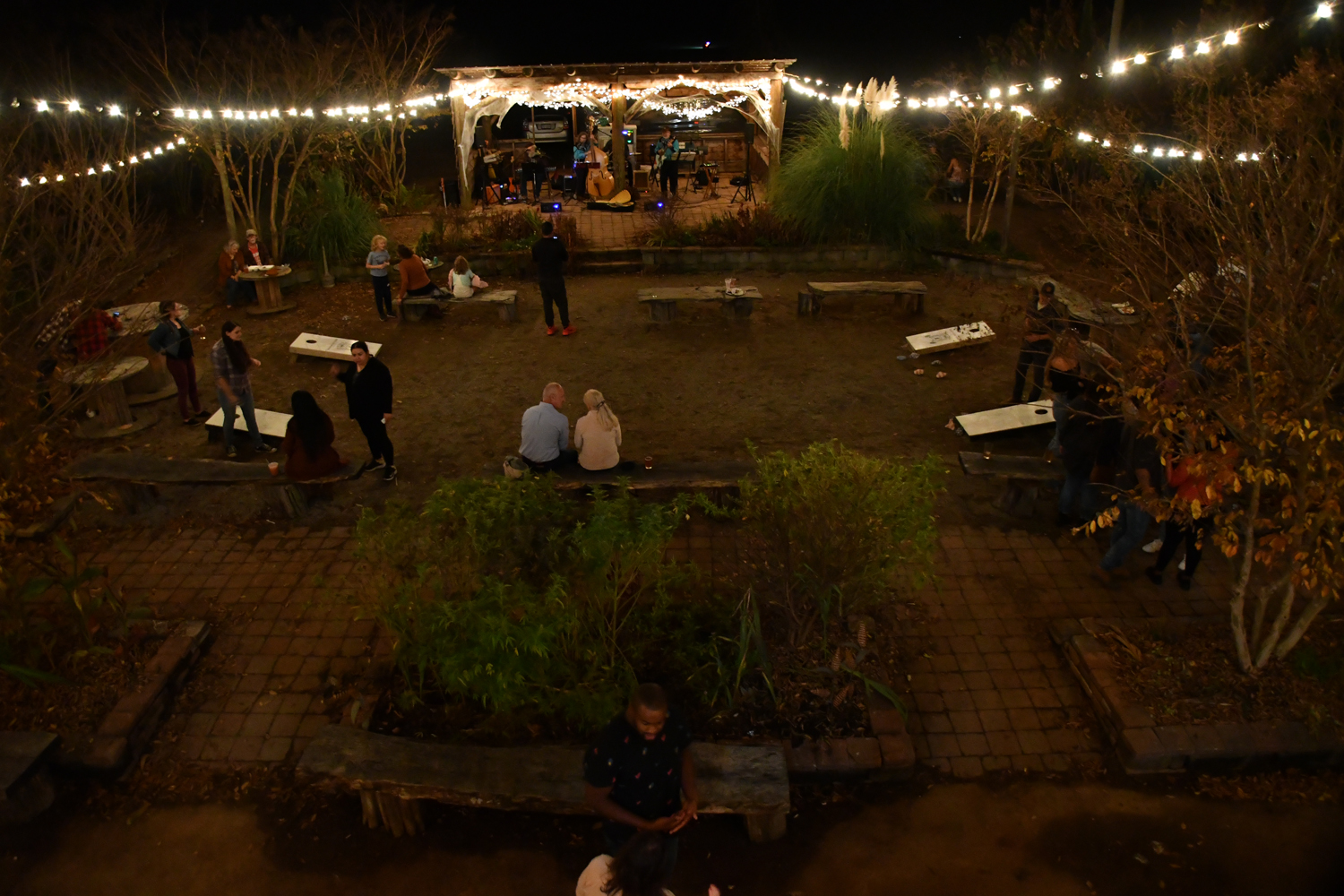
Descending a hillside brings into view a tranquil lake and handsome three-story log cabin with covered decks on the two top floors.
Commenting on the beauty of the small lake, I could understand why he built this handsome log house next to it. I did not realize until later that he first had to build the lake.
Barry explained that the cabin started out to be a bathroom because when the family would have beach parties there the girls would have to run into the bushes to pee. The girls made it very clear that they wanted a bathroom by the lake. He offered to build an outhouse. “No way,” they protested, “spiders and snakes!”
Barry agreed to build a bathroom. To do so required building a one-room cabin. This meant digging a basement and pouring walls. He said, “I decided it wasn’t big enough so we added a bedroom. Then I realized that the bedroom would block the view of the lake so I turned the bedroom into a sun room and went up to a third level for bedrooms.” To finish things off he added decks. He now rents it.
I told Barry that such a lovely lake made it a perfect spot for the cabin. He then added that he had created the lake some years back as well. He says, “My intention was to excavate a little swimming hole for the kids with the help of a friend with a small bulldozer.” Six weeks later Barry had involved eight pieces of excavation equipment including a mammoth Caterpillar D8 bulldozer. Barry adds, “When we finished, the lake reached a depth of 27 feet and the dam a height of 32 feet.”
As would become evident on my subsequent tour of the farm, Barry has employed a free form genius that manifested by taking the seed of an idea and running with it as it gained momentum until finally, over time, it matured into a realized and complete execution. Concurring Barry says, “I can’t do something until I “see” it in my mind. Sometimes I will lose the vision. Then, maybe at 2:00 in the morning “pop” the vision returns and I can proceed.”
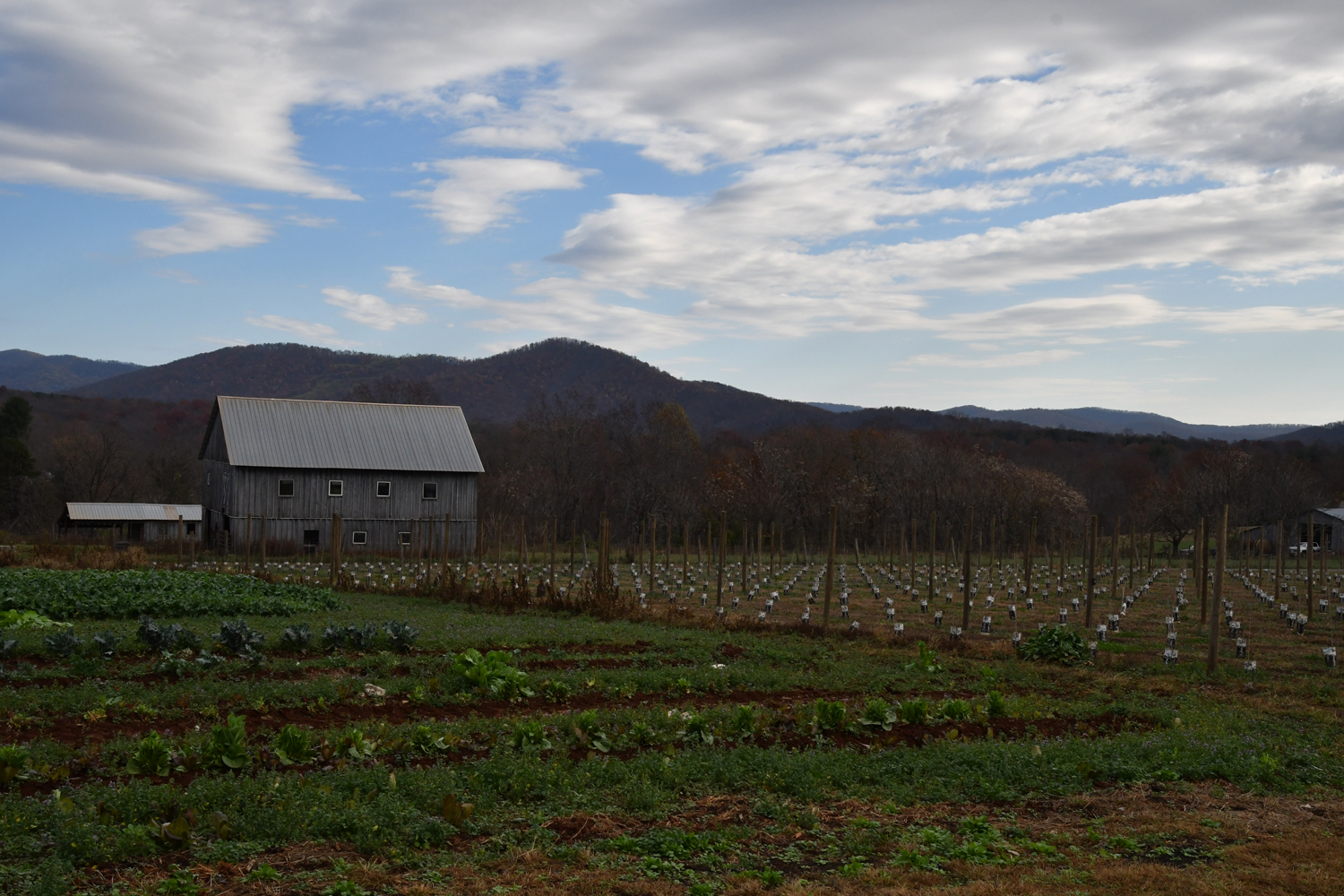
Vineyard in the making
Barry’s sturdy Ford navigated the roads as he shared stories of his efforts. Both presented a very bumpy ride. His litany of efforts include raising alpacas, growing shrimp and running 49,000 feet of drip line during a drought to raise watermelons, cantaloupes, tomatoes, squash, zucchini and more. Deer ate every melon and cantaloupe.
A litany of Barry’s 20 plus years of efforts to preserve and promote Wood Ridge Farm clearly displays a tenacity that offers tribute to the human spirit.
Then around ten years ago, Barry heard that distillers had their eyes out for good size farms to raise barley that would be malted for making beer and whiskey. Game on for Barry. He believed that locally raised and malted barley would be very appealing to the craft brewers and distillers in the region. He went to Canada to learn proper malting and built a specialty barley malting facility on the farm. Wood Ridge Farm would malt barley just like it was done 200-years ago. With his successful early efforts he used the malted barley to brew Wood Ridge Farm’s own beer. To quote from Genesis, “And it was good.”
With the proof in the bottle, so to speak, Barry went on the road to sell his specialty malted barley. Initial efforts met with success but the spotty nature of demand presented problems. Buyers would only purchase when the fresh hops were available and resistance to the price he needed to charge for his premium specialty malted barley met with resistance from distillers that could get by with lower quality malt. Barry says, “So I pretty much just got pissed off one day and got on my backhoe and started digging footings. I would build my own brewery.”
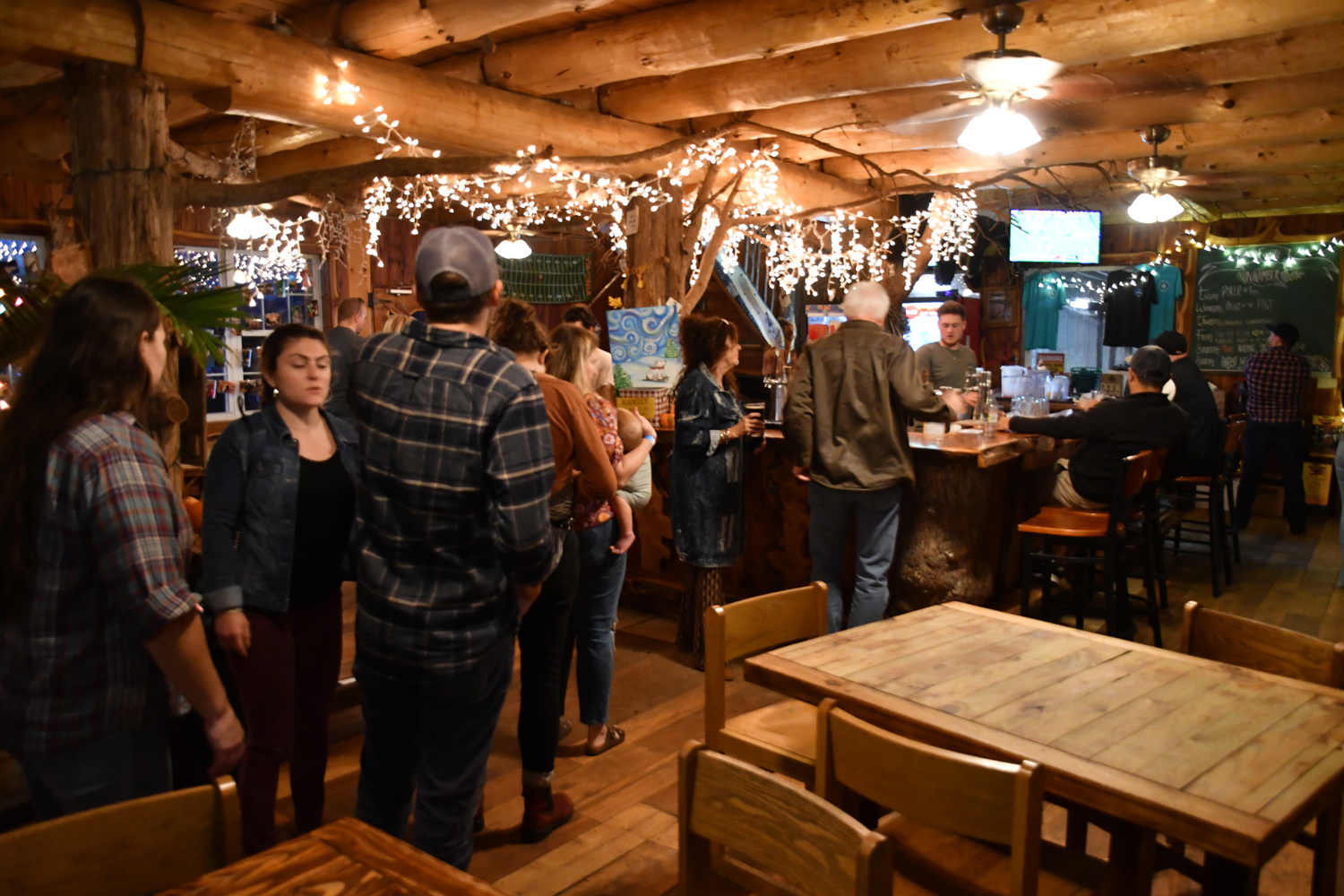
Inside the brewery
As Barry started digging footings around 2014 he discovered that he would be exceeding the maximum allowable footprint before triggering environmental rules dictating retention ponds and other requirements. He chose to reduce his footprint and build a second floor. With the bones of the Wood Ridge Farm Brewery established, he went about harvesting timber for the farm’s saw mill to create the boards to complete his rustic vision that stands today as the beating heart of a healthy Wood Ridge Farm tradition.
As Barry takes a moment to reflect on the present state of the farm, He is first quiet then says, “Yep, creative agritourism and the fact that we raise our own barley and malt the barley like it was done 200 years ago, there’s easier ways, but that’s the way we do it. And it’s working.” Then he allows himself a well earned smile.
